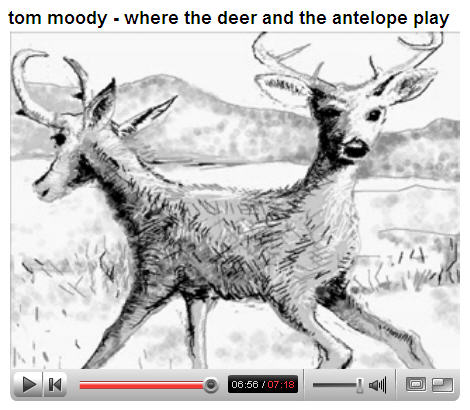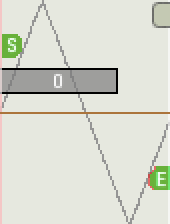View current page
...more recent posts
New York Times columnist Tom Friedman writing in his "globalist" book, The Lexus and the Olive Tree: "The hidden hand of the market will never work without a hidden fist. McDonald's cannot flourish without McDonnell Douglas. And the hidden fist that keeps the world safe for Silicon Valley's technologies to flourish is called the U.S. Army, Air Force, Navy and Marine Corps." First of all, with 700 military bases around the world no one can seriously call the fist "hidden." But who knew people around the globe were eating KFC and watching Die Hard at gunpoint? Friedman has remarkable insight. At least this quote is more honestly cynical than his famous "No country with a McDonald's has ever gone to war with another country with a McDonald's." (McDonnell Douglas quote via Daily Kos)

A live drawing demonstration by yours truly on YouTube. It's 7 min., 18 secs. Watch and learn. Thanks to Guthrie for compressing and uploading this--I still don't have a YouTube account. But it's the perfect place to teach folks how to draw good.
Update: jmb spotted the timeless "Antler Fight" on the side of my YouTube page. Bertolucci, eat your heart out.
Juan Cole, on the news that VP Cheney blew off overtures from Iranian moderates in 2003:
Fascism depends on the creation of straw man enemies said to be dire threats to the Homeland. Iran is a poor weak third world country and poses no threat to the US. It hasn't aggressively invaded another country for over a century. But Cheney needs Iran to substitute for the old Soviet Union, otherwise how could he get you to agree to let him listen in on your telephone calls without a warrant, or let him torture people?

Infinite Smile (view in Quicktime here), by the artist duo MTAA (M.River & T.Whid Art Associates), made its gallery debut last night in an elegantly appointed group show at Bryce Wolkowitz. A video of the artists holding smiles for a stretch of several agonizing minutes is sped up, then run forwards and backwards to make a continuous loop. The gallery projection is large and seamless and the viewer is transfixed helplessly before this techno-tableau of painful good intentions. The time-alterations give the subjects a twitchy, amphetamine-addled look: they might to be holding poses for some future dystopian hologram ID gone all glitchy due to budget cuts in the security ministry.
Interesting historical show at Greene Naftali gallery opened last night: paintings and film by Tony Conrad, a cult figure who performed with La Monte Young, John Cale, and Faust in the '60s/early 70s. As the story has it, he invited people to a '70s film screening and instead of the avant garde Stan Brakhage-like art cinema they were expecting he hung a group of abstract paintings around the room the approximate height and orientation of film screens. The paintings had heavy brushy black outlines and resembled empty cartoon panels. These non-cloying pastel trichromes were painted on heavy paper and pushpinned to the wall; crimped and decayed after 30 years in the artists' attic, the same "screens" now fill the gallery and are extremely funky.
It's possible that Conrad invented "New Image Painting" with this show--that is, the injection of pictographic imagery into the uninflected language of minimalism as later, more famously practiced by Susan Rothenberg, Robert Moskowitz, and Jennifer Bartlett--and he should get props!
A real treat was seeing a Conrad film projected on one of the columns of the gallery. Seizure-inducing op art abstraction consisting of stroboscopic layers of horizontal and vertical bands triggering optical colors on the retina, all the stranger for being on scratchy, browning, aged film stock. Accompanied by a recording of John Cale's and Terry Riley's "Ides of March" from the Church of Anthrax album. This music--again, a cult fave in the music world--was played during the film's original screening, which I'm guessing must have been around '70-'71. Cale was Conrad's roommate at the time, I'm told. Slightly off-topic, I've read that the minimal-minded Riley strenuously objected to the energetic drum kit Cale dubbed onto this two-piano work.
Thanks to Greene Naftali for the time travel.
Update: According to Jeff S the film we saw was "Straight and Narrow," which Conrad made with his wife Beverly.

"Song 13 (Quatrains)" [mp3 removed]

"Song 12 (Simple Waveforms)" [mp3 removed]
A few thoughts on science fiction:
I'm embarrassed to say I don't think about the future much, other than serious unease about what we're doing to the planet and what steps we could take to lower our "carbon footprints." The writing here is fixated on a relentless present, which makes it hard even to look back at the past of what's already been said. (Although no one could be as amnesiac as the hapless Kevin Drum, who claims not to remember what lefty bloggers were saying before the Iraq War started.)
I still read a lot of science fiction but I think of it as travelling laterally in time, to parallel universes where technology has had this or that effect, or as a Swiftian satire of our moment. Or pure escape into a visionary world. I'm not apologetic about the latter, as long as the "visions" aren't too much about simple, obvious adolescent wish fullfillment ("If I could fly I'd show them!")
The film critic Raymond Durgnat once talked about the "mute poetry of the commercial cinema," such as a poignant shot of items in a display window in an otherwise awful film. That's what I'm most interested in in sf--the poetic content of imagining the future, which speaks to our time as opposed to just reiterating past writing conventions (e.g., having a character using a computer in a present day novel that is otherwise 19th Century in its structural particulars).
